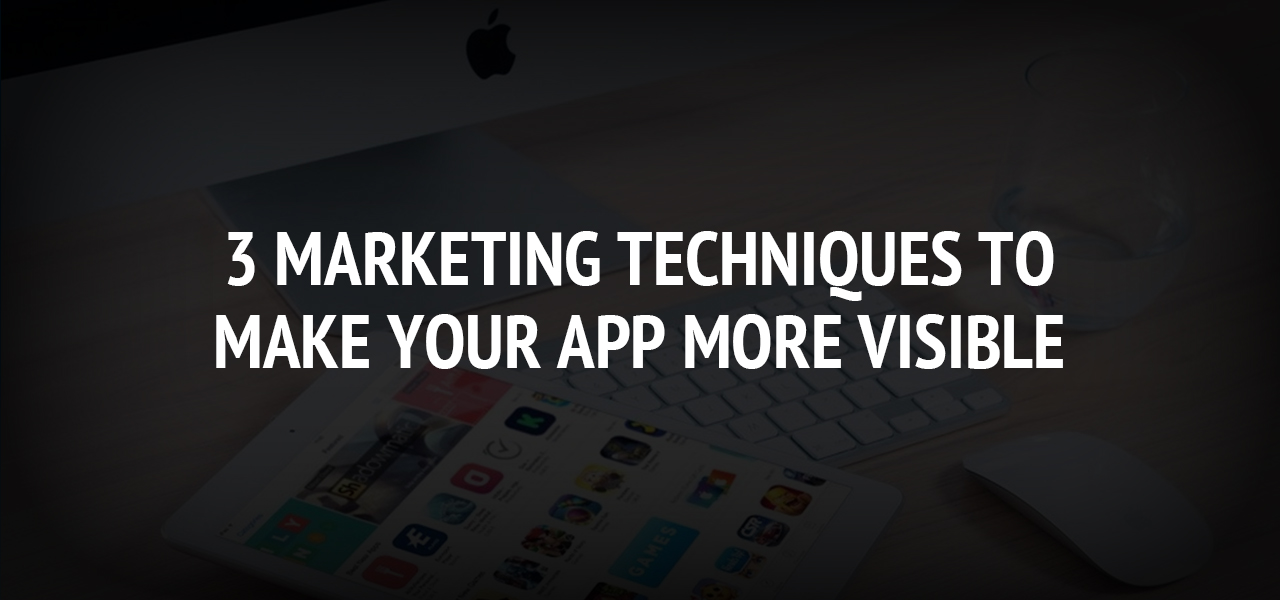3 Marketing Techniques to Make Your App More Visible

Nothing is worse than working hard on developing a perfect app only for it never to get noticed. The concept may be original, the coding flawless, and the interface easy to use. But without proper marketing, who is going to see it?
This situation is the unfortunate reality of the app market today. But, thankfully, with hard work and good knowledge of online marketing, gaining visibility is possible.
If you want to enhance your visibility, it's essential to grasp some related concepts: Pay-Per-Click (PPC), Search Engine Optimization (SEO), and App Store Optimization (ASO).
Pay-Per-Click (PPC)
PPC advertising is when a company pays for advertising to show up from a search on a search engine. The name comes from the fact that companies pay for every click the advertising brings. This form of advertising can be an excellent way to generate leads and create conversions for your application.
Getting to grips with Quality Scores will help you get the most out of PPC advertising. PPC advertising experts Bluelight highlight good keyword choice and relevance as the best ways to achieve 'more traffic at less cost.' It's also crucial to remember shortcuts like keyword stuffing will never work as search engines can easily detect fraudulent marketing tricks.
Search Engine Optimization (SEO)
SEO practices are popular for a lot of businesses trying to direct traffic to their websites. However, SEO also can be useful for bringing leads to your venture.
According to data collected from customers, up to 27% of visits to app products come through search engines. Search engines are a leading way to bring attention to your app, especially to those who might not yet realize something like it exists for their searched needs.
Like PPC, one of the fundamental principles behind effective SEO practice is proper keyword use. Try to match words used to describe your application with those most commonly searched in your product niche.
On top of this, product reviews posted online provide substantial traffic, and sound backlinks will bring your organic ranking up. The goal is always to boost the presence of your app in light of the most common word searches for your product.
App Store Optimization (ASO)
ASO techniques focus on the specifics of app stores and require a different marketing toolkit. The first steps in the process are at the development stage. Is your app name unique? If not, you may be competing with similarly named applications when a different name would help make your product stand out in the store.
In the app store itself, it's essential to provide a clear description, including the relevant keywords. This step includes picking the correct categorization. When someone searches categories in app stores, you don't want yours to come up on the wrong page.
Lastly, these stores can run Cost-Per-Install (CPI) campaigns. Similar to PPC advertising, CPI lets app developers pay for every install carried out. The short-term costs of this are minuscule compared to the long-term visibility gained by campaigns like this. Simple tricks based around the app store's platform can go a long way in the profile of your product.
Get Discovered Now
These are just three of the most commonly used techniques to raise your app's visibility. Other ways include utilizing other platforms like YouTube reviews from vloggers or pushing word-of-mouth sharing. The methods available are endless, no matter what your app is.
Regardless of the direction you take, every way requires hard work and smart marketing. Apps are a difficult market for startups. But, with the right concept, and some basic marketing principles, you will be on your way to getting your app on the 'popular' page of any app store.
About The Author
Related Blog
View All-
Latest Artificial Intelligence Development Trends in 2020
Artificial Intelligence is gathering speed no doubt and will likely gain more acceleration in 2020. There are negatives to AI but, overall, it is all going to be helpful for businesses and individuals. Activity is certainly hectic with facial recognition being ...
-
What Apps Should You Consider for Effective Virtual Safety Training?
Safety training is crucial in many fields. It helps workers know the risks and learn how to avoid hazards. Now, with more people working remotely and using virtual platforms, online safety tools have become a hot demand. There are so many apps out there - but ...







